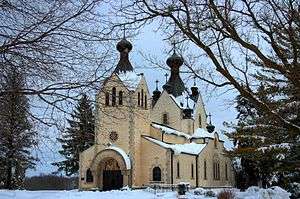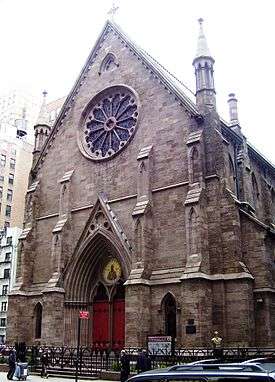Serbian Americans
| Total population | |
|---|---|
| ( 199,080 (2012) [1]) | |
| Regions with significant populations | |
| Languages | |
| Religion | |
| Serbian Orthodox | |
| Related ethnic groups | |
| European Americans, Serbian Canadians |
Serbian Americans[a] (Serbian: Амерички Срби/Američki Srbi) are United States citizens of Serb ethnic ancestry. As of 2012, there are 199,080 American citizens of "Serbian ancestry" who identify as having Serb ancestry. However, the number may be higher, as some 328,547 people who identify as Yugoslavs living in the United States, and many Yugoslav immigrants were of Serb ethncity.[2]
The group includes Serbian Americans living in the United States for one or several generations, dual Serbian–American citizens, or any other Serbian Americans who consider themselves to be affiliated to both cultures or countries.
History

One of the first Serb immigrants to the United States was the settler George Fisher, who arrived in Philadelphia in 1815 and later fought in the Texan Revolution. In the 1830s, many Serb sailors and fishermen from Montenegro and Herzegovina immigrated to New Orleans seeking employment. Other Serbs settled in Alabama and Mississippi, as well as California, where they joined the Gold Rush.[4] Serb immigrants first came in significant numbers to the United States in the late 1800s from the Adriatic regions of Austria-Hungary and areas of the Balkans.[5] During this time, most Serb immigrants to the United States settled in mid-western industrial cities or in California, which had a climate similar to that of the Dalmatian coast.[2] Serb men often found employment in mines, and numerous Serb families moved to mining towns throughout the country.[5] In 1943, many Serbian-American miners were killed in the Smith Mine disaster in Montana.[5]
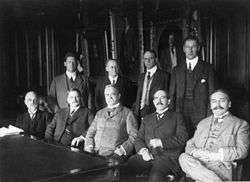
The number of Serbs who immigrated to the United States is difficult to determine as Serb immigrants were often variously classified by their country of origin, thus as Turks, Bulgarians, Croats, Slovenes, Montenegrins, Dalmatians, Bosnians, Herzegovinians and Austro-Hungarians.[2] In the 1910 census, there were 16,676 Serbs from Austria-Hungary, 4,321 from Serbia, and 3,724 from Montenegro.[6]
Serbian-Americans volunteered in the First Balkan War.[7] During World War I, as many as 15,000 Serbian-American volunteers returned to the Balkans to fight for the Allied cause in their homeland. Serbs in the United States who did not volunteer to fight marched for the creation of Yugoslavia, sent aid to the Balkans through the Red Cross, formed a Serbian Relief Committee, and urged notable Americans to support the Serbian cause.
Distinguished Serbian American scientist Mihajlo Pupin, a friend of US President Woodrow Wilson, led the Serbian National Defence (SND), a Serbian-American organization which collected money and attempted to influence American public opinion with regard to the Balkans.[8] During World War I, Pupin's Consulate in New York served as a center of Serbian-American diplomacy and volunteering of Serbian Americans to the Serbian front.[9] In the 1912–18 period, thousands of Serbian-American volunteers came from Alaska and California.[10]
After World War II many Serbs immigrated to the United States from Yugoslavia after the country came under the authoritarian rule of Communist leader Josip Broz Tito.[11] Since then, many Serbian American cultural and religious organizations have been formed in the United States. With the fall of Communism and the disintegration of Yugoslavia, Serbs in the United States have established several interest groups, the most organized of which is the Serbian Unity Congress (SUC).[12]
Demographics
| Year | Number |
|---|---|
| 1980[13] | 100,941 |
| 1990[14] | 116,975 |
| 2000[15] | 140,337 |
| 2010[16] | 187,739 |
A total of 187,738 citizens of the United States declared Serb ethnicity in 2010 (while the 2012 American Community Survey has an estimate of 199,080). It is highly likely that among the citizens who declared Yugoslavian ethnicity (328,547 in 2010; 310,682 in 2012 estimation) are additional ethnic Serbs.[2]
Major centers of Serbian settlement in the United States include Indianapolis, Chicago, New York City, Milwaukee (12,000[17]), Cleveland, Pittsburgh, and Jackson, California.[2]
Various ethnic organizations put the number of Serbian Americans at more than 350,000.[2]
Notable people
 |  |  |  | 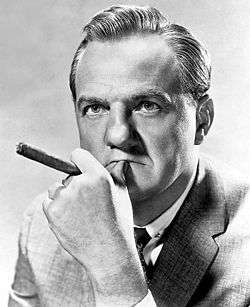 | 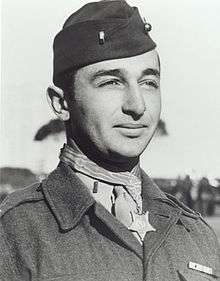 |  |  |  | 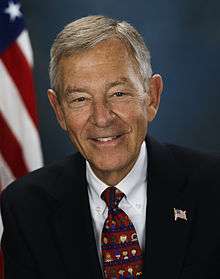 |  | |
 |  |  |  | 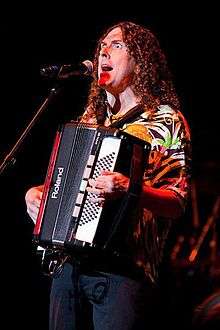 |  |  |  | 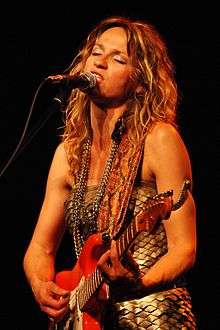 |  |  |  |
Notable Serbian Americans among others include recipients of the Medal of Honor such as World War I veteran Jake Allex. In 1905, Rade Grbitch, a Serb from South Chicago, was awarded the Medal of Honor by the United States Navy for heroic action on the Pacific Coast (Interim Awards, 1901-1911). The most decorated Serbian veterans of World War II were Mitchell Paige and John W. Minick, both recipients of the Medal of Honor, and George Musulin, an officer of the Office of Strategic Services and naval intelligence, better known for Operation Halyard. In Vietnam, Lance Sijan, received the Medal of Honor posthumously. Butch Verich, Mele "Mel" Vojvodich, and Milo Radulovich are other notable veterans. George Fisher was a 19th-century Serb settler who played an important role in the Texan Revolution.[4]
Rose Ann Vuich was the first female member of the California State Senate. Helen Delich Bentley is a former Republican member of the U.S. House of Representatives from the State of Maryland (1985–95). The port of Baltimore was named Helen Delich Bentley Port of Baltimore after her in 2006. Many notable Serbian Americans have been active in the fields of film and art, such as Brad Dexter and Peter Bogdanovich. Karl Malden won an Oscar as Best Supporting Actor while Steve Tesich was Oscar-winning screenwriter, playwright and novelist. He won the Academy Award for Best Original Screenplay in 1979 for the movie Breaking Away. Predrag Bjelac is mostly known for his roles in Harry Potter and the Goblet of Fire and The Chronicles of Narnia: Prince Caspian. Catherine Oxenberg is an actress who is a daughter of Princess Jelisaveta Karađorđević, from Karađorđević Dynasty. Darko Tresnjak is a theatre and opera director born in Zemun, who won four Tony Awards in 2014.[18]
Charles Simic and Dejan Stojanovic are notable poets. Walt Bogdanich (1950) is an investigative journalist. He won the Pulitzer Prize for Specialized Reporting in 1985, the Pulitzer Prize for National Reporting in 2005 and the Pulitzer Prize for Investigative Reporting in 2008. Bogdanich led the team that won the 2008 Gerald Loeb Award for their story "Toxic pipeline". Branko Mikasinovich is a scholar of literature as well as a noted Slavist and journalist. He has appeared as a panelist on Yugoslav press on ABC's "Press International" in Chicago and PBS's "International Dateline" in New Orleans. Alex N. Dragnich is the recipient of the Thomas Jefferson Award for distinguished service to Vanderbilt University, and he is author of numerous books on Serbian/Yugoslav history.
Nikola Tesla and Mihajlo Idvorski Pupin are world-known scientists. Another accomplished Serbian-American scientist, Miodrag Radulovački, was named the 2010 Inventor of the Year at the University of Illinois[19] for producing a dozen potential therapies for sleep apnea. Hall of fame basketball player, Pete Maravich (1947–1988) is listed among the 50 Greatest Players in NBA History. Sasha Knezev: is a Serbian American filmmaker known for American Addict, American Addict 2, Fragments of Daniela and Welcome to San Pedro.[20]
In popular culture
- Brad Dexter plays Senator East, who gives a Serbian lecture in the 1975 film Shampoo.
- Craig Wasson plays a Serbian American "Danilo Prozor", in the 1981 film Four Friends. In the film, Danilo has conflicts with his father, his struggle with his heritage, his lingering relationship with a girlfriend, and his thwarted marriage to a Long Island debutante.
- Sam Rockwell plays a Serbian-American boxer, "Pero Mahalovic", in the 2002 film Welcome to Collinwood.
- Tom Cruise plays a Serbian American "Stefan Djordjevic" in the film All the Right Moves.
- George Clooney's film Good Night and Good Luck, is based on the events surrounding the discharging of American Serb Milo Radulovich during the American Red Scare.
- Simone Simon plays Serbian-born fashion designer Irena Dubrovna in the Cat People (1942 film). She also appears in The Curse of the Cat People, a 1944 sequel to The Cat People.
- Philip Dorn plays Draža Mihailović in the 1943 Hollywood film Chetniks! The Fighting Guerrillas.
See also
| Part of a series of articles on |
| Serbs |
|---|
 |
|
Native communities |
|
Related people |
Annotations
- ^ The community is commonly known in English as "Serbian Americans", and scarcer as "Serb Americans". In Serbian, the community is known as "American Serbs" (Амерички Срби/Američki Srbi), and scarcer as "Serbs in America" (Срби у Америци/Srbi u Americi).
References
- ↑ "2012 American Community Survey".
- 1 2 3 4 5 6 Powell 2005, p. 267.
- ↑ (PDF) https://unreachednewyork.com/wp-content/uploads/2012/11/Serbian-Profile-Final.pdf. Missing or empty
|title=(help) - 1 2 Henderson & Olasiji 1995, p. 124.
- 1 2 3 Alter 2013, p. 1257.
- ↑ Blagojević 2005, p. 30.
- ↑ Rodney P. Carlisle; Joe H. Kirchberger (1 January 2009). World War I. Infobase Publishing. pp. 11–. ISBN 978-1-4381-0889-6.
- ↑ Bock-Luna 2005, p. 25.
- ↑ Serbian Studies. 4–5. North American Society for Serbian Studies. 1986. p. 19.
- ↑ Serb World. 5–6. Neven Publishing Corporation. 1988. p. 40.
- ↑ Powell 2005, pp. 267-268.
- ↑ Paul 2002, p. 94.
- ↑ "Rank of States for Selected Ancestry Groups with 100,00 or more persons: 1980" (PDF). United States Census Bureau. Retrieved 30 November 2012.
- ↑ "1990 Census of Population Detailed Ancestry Groups for States" (PDF). United States Census Bureau. 18 September 1992. Retrieved 30 November 2012.
- ↑ "Ancestry: 2000". United States Census Bureau. Retrieved 30 November 2012.
- ↑ "Total ancestry categories tallied for people with one or more ancestry categories reported 2010 American Community Survey 1-Year Estimates". United States Census Bureau. Retrieved 30 November 2012.
- ↑ https://www.mail-archive.com/balkannews@yahoogroups.com/msg00978.html
- ↑
- ↑ Serb is Inventor of the Year in Illinois, UIC OTM Announces 2010 Inventor of the Year
- ↑ Knezev, Sasha. "Official Website". 888films.
Books
- Alter, Peter T. (2013). "Serbs and Serbian Americans, 1940-present". In Barkan, Elliott Robert. Immigrants in American History: Arrival, Adaptation, and Integration. Santa Barbara, California: ABC-CLIO, LLC. pp. 1,257–1,263. ISBN 978-1-59884-220-3.
- Blagojević, Gordana (2005). Срби у Калифорнији: обредно-религијска пракса и етницитет верника српскикх православникх парокхија у Калифорнији. Etnografski institut SANU. ISBN 978-86-7587-033-3.
- Bock-Luna, Birgit (2005). The Past in Exile: Serbian Long-distance Nationalism and Identity in the Wake of the Third Balkan War. Berlin, Germany: LIT Verlag Münster. ISBN 978-3-8258-9752-9.
- Henderson, George; Olasiji, Thompson Dele (1995). Migrants, Immigrants, and Slaves: Racial and Ethnic Groups in America. Lanham, Maryland: University Press of America. ISBN 0-8191-9738-6.
- Kosier, Ljubomir Stefan (1926). Srbi, hrvati i slovenci u Americi: ekonomsko-socijalni problemi emigracije. b.i.
- Lopušina, Marko; Lopušina, Dušan (14 October 2013). Srbi u Americi. Agencija TEA BOOKS. ISBN 978-86-6329-097-6.
- Marković, Luka (1975). Borba u iseljeništvu za novu Jugoslaviju. Izdavački centar Komunist.
- Pejović, Luka M. (1934). Život i rad američkih Srba.
- Paul, Rachel (2002). "Serbian-American Mobilization and Lobbying: The Relevance of Jasenovac and Kosovo to Contemporary Grassroots Efforts in the United States". In Ambrosio, Thomas. Ethnic Identity Groups and United States Foreign Policy. Westport, CT.: Greenwood Publishing Group. ISBN 0-275-97532-0.
- Powell, John (2005). Encyclopedia of North American Immigration. Infobase Publishing.
- Slepčević, Pero (1917). Srbi u Americi: Beleške o njihovu stanju, radu i nacionalnoj vrednosti. Ujedinjenja.
- Šotra-Gaćinović, Milena (1990). Viđenja iz iseljeničkog života u Americi. Vojnoizdavački i novinski centar.
- Vidaković-Petrov, Krinka (2007). Срби у Америци и њихова периодика. In-t za književnost i umetnost.
Journals
- . doi:10.2298/GEI0351061P. Missing or empty
|title=(help)
External links
- USA SERBS/Serbian-American network
- Famous Serbian Americans
- Serbian National Defense Council of America
- Serb National Federation
- Serbs for Serbs
- Serb Life eMagazine
